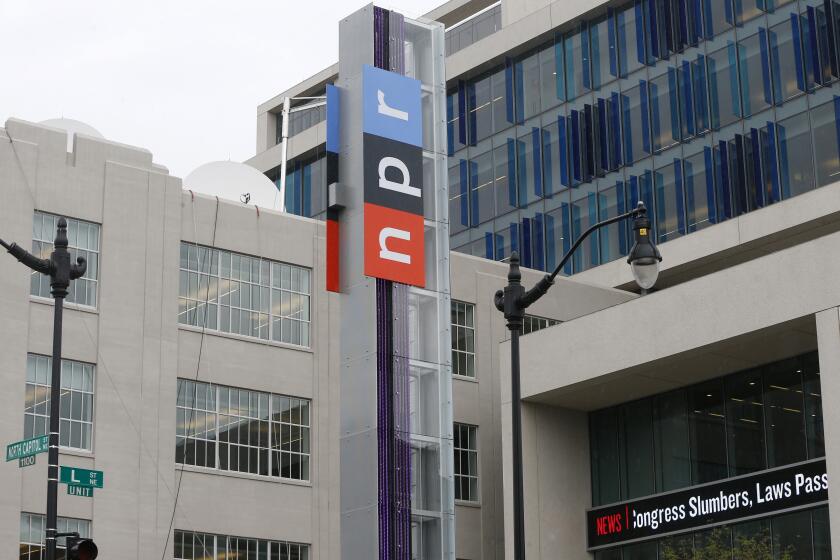Ocular proliferation
- Share via
ALL hail the DVD.
Its days could be numbered.
Just as DVDs, introduced in 1997, obliterated the once-ubiquitous videocassettes for watching movies at home, there are now plenty of formats-in-waiting that would like to seriously cut into DVDs’ reign.
At least one of them offers far better image quality under the right conditions, while the others are trying to build their fan bases around convenience.
Here are the contenders:
HD DISCS
THIS category, after a mediocre debut this year, is finally showing promise.
The discs, which look almost exactly like DVDs, come in two flavors -- Blu-ray and HD DVD -- and both are capable of showing movies in much higher resolution than DVDs.
This wasn’t an issue before the arrival of high-definition television. Regular DVDs put out the maximum resolution that standard TVs can handle (not to get too technical about it, but in general terms it’s 480 horizontal lines of visual information). HDTVs push the envelope far, far higher (up to 1,080 lines) and that’s what these new discs can provide.
The problem was that when Blu-ray and HD DVD were introduced, the real-world improvements they displayed were so subtle that you needed a very large HDTV to notice much difference. And in the meantime, DVDs looked fantastic on HDTV so there was little reason to upgrade.
But HD disc formats are starting to get their act together. For this latest round of testing, I got a group of friends together to watch a just-released Blu-ray disc of “Black Hawk Down” on the latest 37-inch LCD HDTV from Sharp. I wanted to see if we could tell much difference between the Blu-ray and DVD versions of the movie, even on a set that is relatively small for HDTV. I did similar tests when Blu-ray was introduced.
This time, Blu-ray was hands-down superior, with more vivid colors, greater detail and an overall brighter image. The picture simply looked richer and had more depth. It was far more like watching a movie in a theater, except we were eating pizza.
Mind you, the DVD still looked pretty good and we wouldn’t have much noticed its deficiencies without the comparison. But switching back and forth between Blu-ray and DVD versions of the film, the differences were striking.
What happened to make Blu-ray viewing so much better? According to Bill Hunt, whose Digital Bits site on the Web (www.digitalbits.com) keeps track of the latest DVD and HD disc releases, it can be attributed to several factors: improvements in players (we used the brand new PlayStation 3, which has a built-in Blu-ray player), refinements in HDTV sets and, perhaps most important, improvements in how movies are digitally mastered for HD.
So are HD discs slam-dunk ready to take over? No, but the main reason isn’t technical. The fact that there are incompatible formats -- each supported by different studios -- is the main drawback. For example, if you want to watch a movie issued in high-def by Universal, you’ll need an HD DVD player. However, movies from Disney, Fox and Sony are coming out in Blu-ray only. (Some studios, such as Paramount and Warners, are issuing both for now).
You just want to lock all these kids in a room and get them to settle this format war. The public battle over these formats has been going on for at least two years, and there’s still no end in sight.
Then there is the expense. While a good DVD player can be had for $75 or less, an HD DVD player costs about $425 and a Blu-ray player is about $725. (Bargain tips: The PlayStation 3 with its Blu-ray capability is a relative bargain at $500, although the game controller takes a bit of getting used to for movie watching. Also, if you already have an Xbox 360, an HD DVD player can be added for an extra $200).
And the discs are more expensive. While the DVD version of “Black Hawk Down” costs about $10, the Blu-ray of the same movie is about $20. (Some but not all rental services have begun carrying the high-def formats.)
DOWNLOADING
INTERNET downloading has transformed the music industry. Just ask the once-mighty Tower Records chain that was auctioned to a liquidator last month. Its fate was at least partly blamed on the popularity of getting music directly off the Internet.
Downloading is also available for movies, primarily through the online CinemaNow (www.cinemanow.com) and Movielink (www.movielink.com) services. Both have dozens of movies available for rent with prices generally ranging from $2 to $4 for 24 hours (after that, the downloaded movie is automatically disabled on the computer). Some of the downloadable films are also for sale.
But there is a basic problem -- time.
Although an entire music CD can be downloaded in just a few minutes, a full-length movie will usually take more than an hour to arrive.
However, the movie can start playing shortly after it begins to download. For example, I rented the film “Eight Below,” which runs two hours, from CinemaNow. Although it took an hour and 10 minutes to fully download on a broadband connection, I was able to start viewing it after 29 seconds.
I could not, however, use several of the regular movie functions -- such as fast-forward or rewind -- until the film was completely downloaded.
Also, downloaded movies are digitally compressed to the extent that the image quality is not nearly as good as on most DVDs. And unless you have video output for television capability, you’ll have to watch downloaded movies on your computer screen, which is often not as good, image-wise.
VIDEO ON DEMAND
MANY cable television companies are offering this major step up from pay-per-view movies. With VOD, you can order a film that you can watch any time instead of just when the cable company shows it.
There were dozens of VOD movies on Charter Communications, the cable company on which I recently tried the service, and the titles ranged from big-time hits (“X-Men: The Last Stand”) to obscure (“The Chumscrubber”).
The titles rotate in and out of availability and, in general, cost about $4. But subscribers who pay for premium services, such as HBO or Showtime, are given access to some titles free.
There were two drawbacks: The films were digitally compressed, so the image quality was not optimum. And worse, many of the widescreen films were available only in standard television, box-like versions.
This included the special-effects-laden “X-Men,” a film that cried out for widescreen treatment.
iPOD
TALK about convenient. When the first video-enabled Apple iPod came out in 2005, just about everyone, including me, was shocked at how clear and bright the image was on the player’s little screen. The TV shows available for the unit looked amazingly good. And the player could fit in a shirt pocket.
Recently, Apple made available a small selection of Disney movies. But the player’s little screen -- shaped like that of a standard, box-like TV -- has a tough time showing wide-screen films. Indeed, to show it at its correct shape, a movie would have to be letterboxed to the point that the image is not much more than a sliver across the screen.
Still, in watching “Eight Below” on the iPod, the basic narrative could be followed, even though buildings in long shots looked like little bumps on the landscape and characters in the distance resembled ants.
And much of the emotion of the film was lost. An early scene that introduced the sled dogs that are at the heart of the movie looked OK on the iPod. I could see the dogs were contentedly sleeping in the snow. But on the big TV, in Blu-ray, that same scene got “awwwws” from my guests and me in response to how cute the dogs looked. That’s important to this film -- and just about any other I can think of -- because you need to feel for the main characters.
Watching a big-screen movie on an iPod is a novelty, but sometimes convenience goes too far.
More to Read
The biggest entertainment stories
Get our big stories about Hollywood, film, television, music, arts, culture and more right in your inbox as soon as they publish.
You may occasionally receive promotional content from the Los Angeles Times.











